-
 Published: Aug 3, 2023
Published: Aug 3, 2023
-
 16 min. read
16 min. read
-
 Sina Mchunu
Sina Mchunu Research & Tech Content Writer
Research & Tech Content Writer
- Sina is a marketing expert who specializes in SEO, AI, and digital marketing content. With over five years of experience, she’s written hundreds of pieces, spanning a variety of topics and industry niches. She loves combining her strong eye for detail and passion for storytelling in her work. You’ll find her fruit picking or horse riding at the local farm when she’s not writing.
What Is Programmatic SEO?
Programmatic search engine optimization (SEO) is the use of automation and technology to improve a website’s performance in search results. It entails using computer programs and algorithms to assess data, make informed decisions and implement changes that might raise a website’s search engine rankings.
Manual optimization tactics are no longer sufficient to stay up with the competition as search algorithms get more complex and user behavior changes. So, you need programmatic SEO to try to remain ahead in the digital realm.
You can use it to expedite your optimization efforts and improve outcomes by utilizing the power of automation and technology. Programmatic SEO solutions provide data-driven decisions that enhance optimization by analyzing massive volumes of data and seeing patterns and trends.
But how do you implement programmatic SEO in your business?
This article answers those exact questions. Read on to learn about the following topics:
- What is programmatic SEO?
- Why does it matter?
- How to do programmatic SEO
- Drive revenue with programmatic SEO services
Let’s dive in!
Looking for an all-in-one SEO audit tool? You’ve found it
SEO checker provides data on key metrics to give you:
- Complete SEO score
- Site Speed Analysis
- Content Grade
- and more.
What is programmatic SEO?
Programmatic SEO is a strategy for improving a website’s search engine performance using automated tools and algorithms. It entails leveraging data and analytics to uncover keywords, develop targeted content, and improve website performance.
This strategy enables your company to execute data-driven decisions and methods more potent at increasing organic traffic and raising search engine rankings. By leveraging technology and artificial intelligence, programmatic SEO can speed up optimization and get better results in less time.
Why does programmatic SEO matter?
Programmatic SEO enables your organization to maintain its competitiveness in the digital environment. It increases the likelihood that potential buyers will learn about your brand by enhancing your website rankings in search engine result pages (SERPs).
Let’s say you sell handmade jewelry — you can apply programmatic SEO to optimize your website for keywords like “unique handcrafted jewelry” or “artisan earrings.”
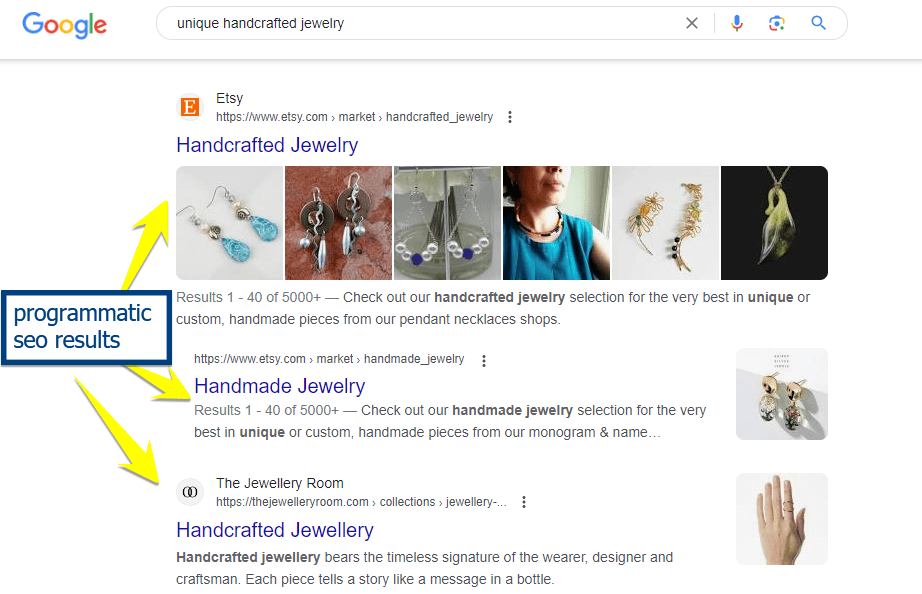
You can use this to make your company more visible on SERPs and attract customers primarily seeking what you provide.
This tailored method increases your possibilities of turning website visitors into paying consumers and aids in your ability to outperform rivals in the online market.
Moreover, programmatic SEO lets your company adjust to shifting market trends and search engine algorithms, ensuring that your website remains pertinent and accessible to your target market. The effectiveness of programmatic SEO as a tool can significantly impact how well your business performs online.
How to do programmatic SEO
So how can you implement programmatic SEO in your business’s marketing strategy? Let’s explore how to do programmatic SEO for better website conversions:
Step 1: Conduct keyword research for programmatic SEO
To perform programmatic SEO successfully, it’s crucial to undertake keyword research beforehand. By identifying keywords, you can strategically use them in your website content to increase its likelihood of appearing higher in search results.
Here are six steps for conducting keyword research to find valuable and practical phrases for your website:
1. Brainstorm a list of potential keywords
Start by listing prospective keywords related to your website and its content as a starting point. Consider the primary topics and challenges your website addresses and the terms or phrases visitors may use to find that information.
What words would your target market use to find information or items/services like yours?. Put yourself in their shoes and come up with creative keyword variants or synonyms — don’t be afraid to think outside the box. The goal is to generate an extensive list of prospective keywords that you can evaluate and refine.
2. Identify modifiers and related terms
Identifying modifiers and related phrases that boost the relevancy of your content is one technique to improve your programmatic SEO. Modifiers are words or phrases that you can use in conjunction with your principal keywords to target specific search queries.
For example, if you’re an online running shoe retailer, incorporating modifiers such as “high-performance” or “trail-running” will attract people who expressly seek those shoes.
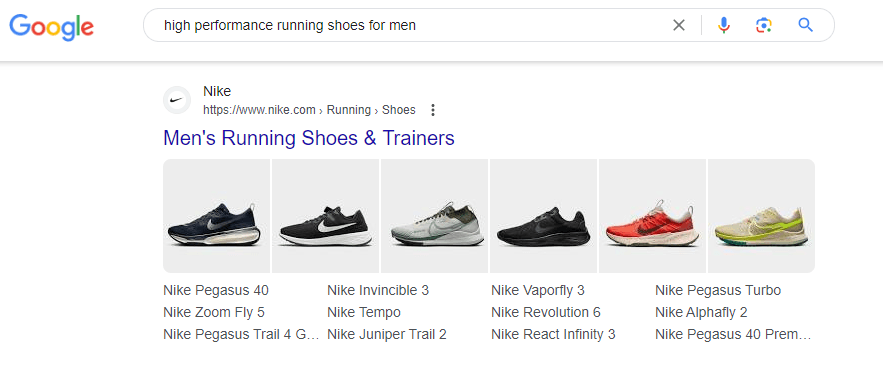
Furthermore, locating related terms like “running gear,” “marathon training,” or “injury prevention” can expand your content strategy to include educational articles and how-to manuals that interest a wider audience who is interested in running.
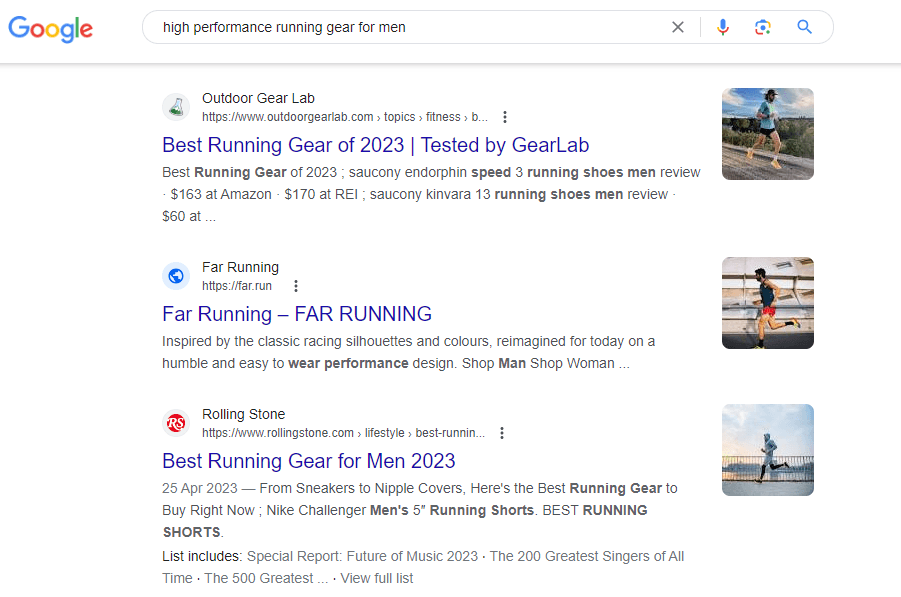
By incorporating these related terms into your content strategy, you can attract visitors looking for running shoes and those looking for information and guidance on various aspects of running.
3. Consider long-tail keywords
Consider long-tail keywords — search phrases that contain three or more words — which are more precise and typically have lower levels of competition. They help bring niche audiences to your website.
When identifying long-tail keywords, consider the unique needs or issues your target audience could face and how your content can address them.
For instance, if you offer fitness equipment, you can target long-tail keywords like “best home gym equipment for small spaces” or “top-rated resistance bands for at-home workouts” rather than the general phrase “exercise equipment.”
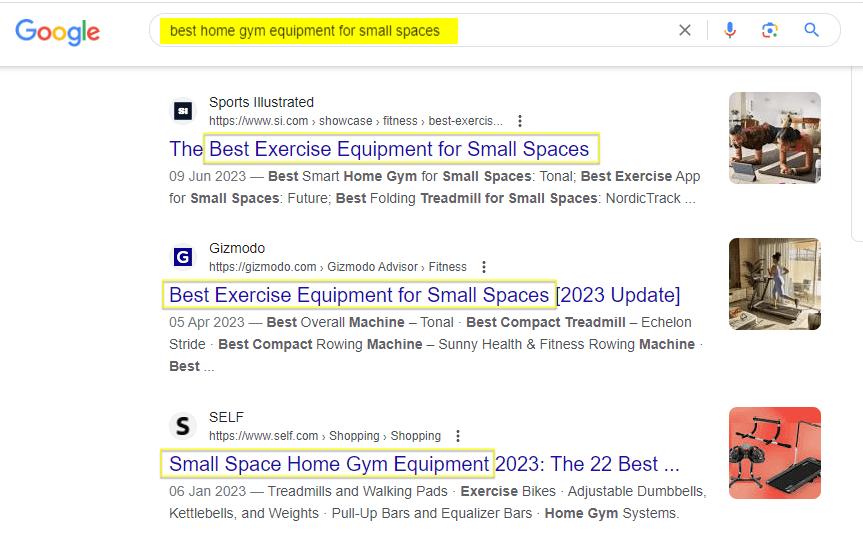
You increase your chances of attracting qualified leads actively looking for what you have to offer by incorporating these long-tail keywords into your content and optimizing your website accordingly.
4. Use keyword research tools to gather data
Utilize a keyword research tool like KeywordsFX to compile data on the number of searches, keyword competition, and related keywords for your chosen topics.
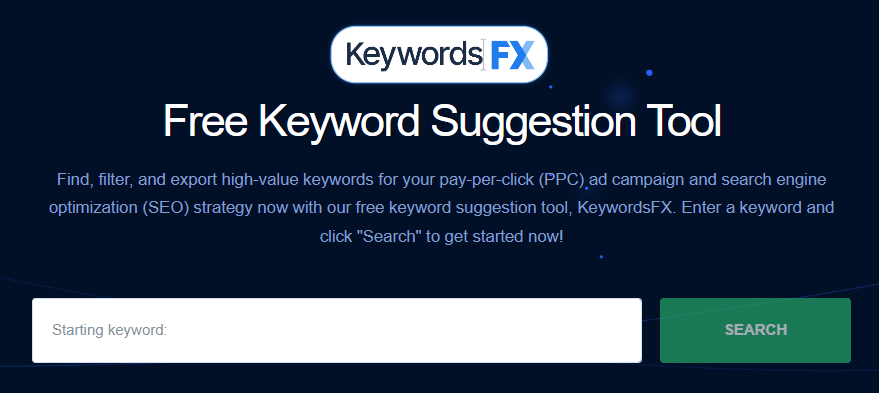
For instance, you can use KeywordsFX to find geographically relevant keywords like “NYC landscapers” or “landscapers in New York City” if you provide landscaping services in that area.
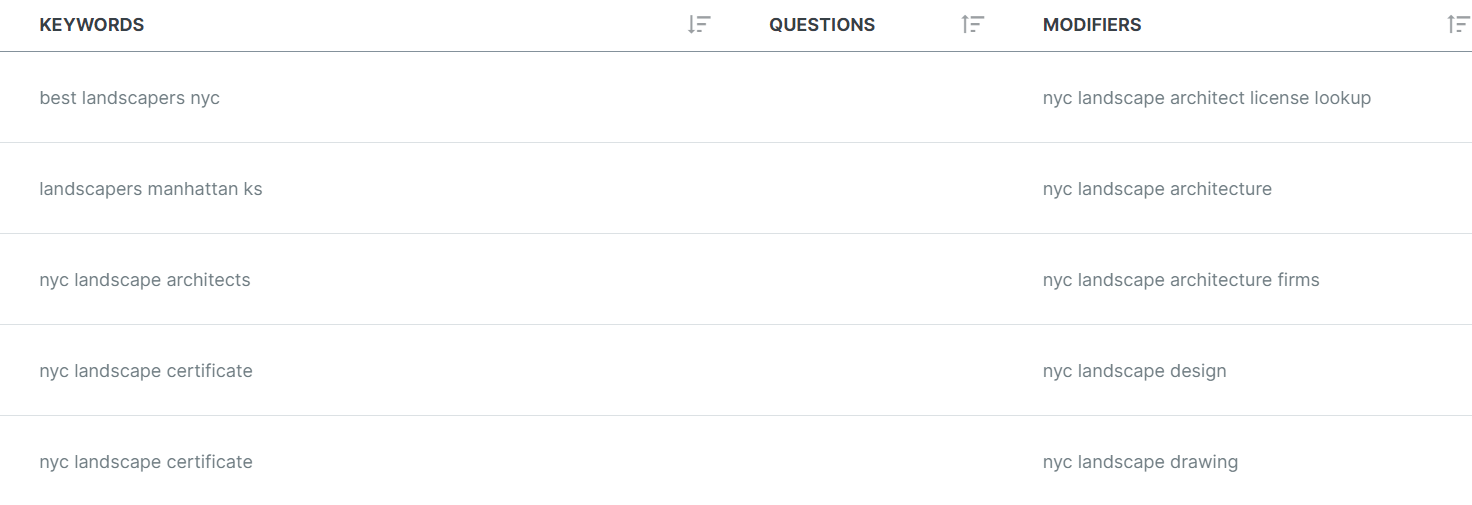
By incorporating these keywords into your content and website optimization, you can increase your chances of displaying in local search results and drawing in clients from your target area.
5. Analyze the search intent behind each keyword
Examine the search intent associated with each keyword to learn what users seek when using that specific phrase. This approach will enable you to match your content to their needs better.
For instance, if someone searches “NYC landscapers,” they probably want to locate professionals who can landscape in New York City. Understanding this intention enables you to modify your material to highlight your proficiency in meeting the particular requirements of city residents.
Directly catering to the needs and preferences of your target audience by creating content that considers the search intent behind your target keywords increases your chances of attracting and converting potential customers.
6. Evaluate the competition for each keyword
Analyze the websites that presently rank highly for each keyword to determine the level of competition. To what extent can you reasonably compete with their content and ranking positions? Examine elements like the domain authority, backlink profiles, and caliber of the content.
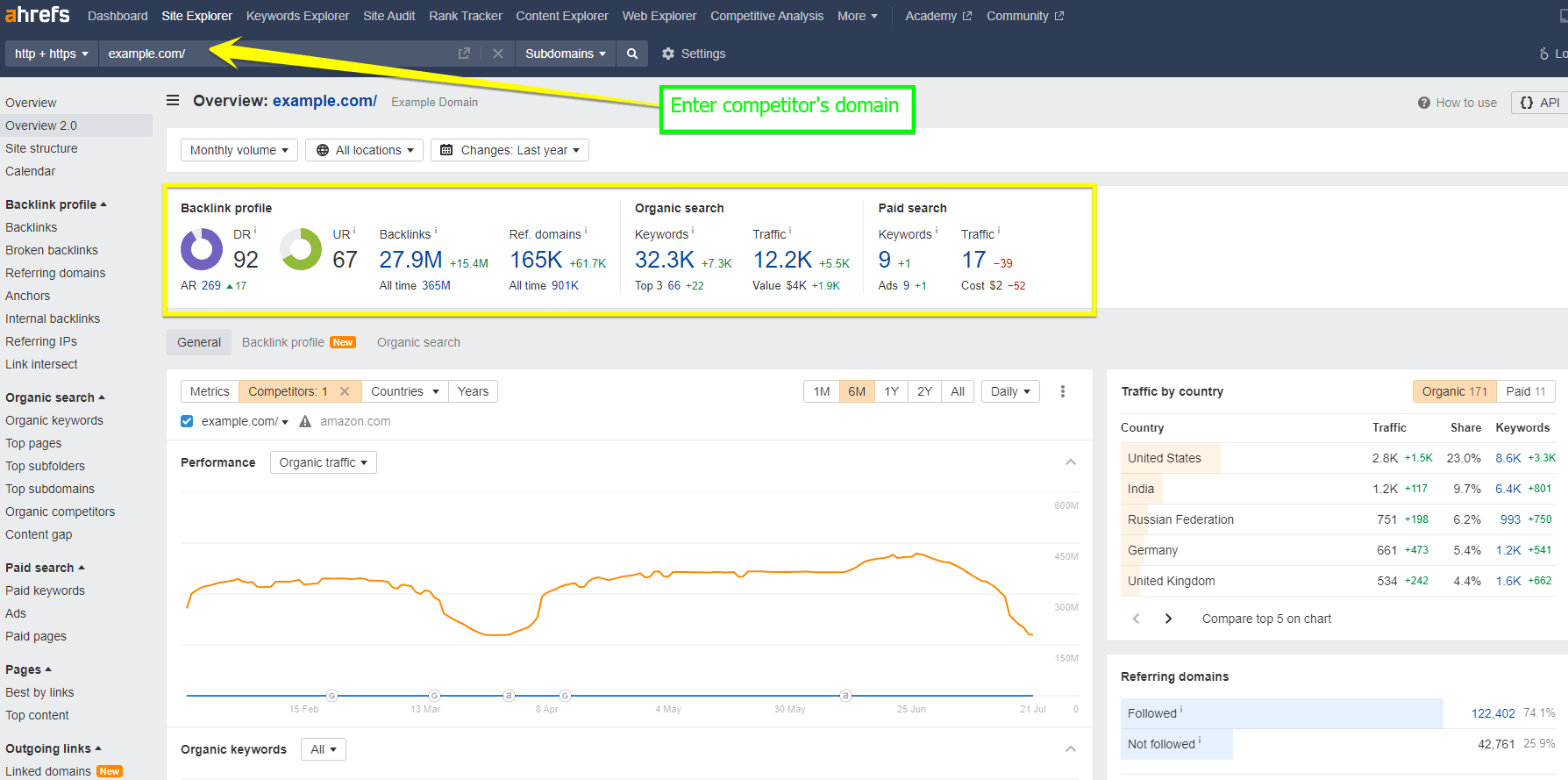
After completing this assessment, you can improve your visibility in SERPs since you’ll know how much time and work it will take to outrank the competition.
Think about how your material differs from other content accessible on the market regarding relevancy and originality. Finding any areas of weakness or room for growth might provide you with a competitive advantage and make you stand out.
Use our proprietary keyword research tool, KeywordsFX, to help you find high-quality keywords for content and PPC campaigns.
Identify Top Keywords for Free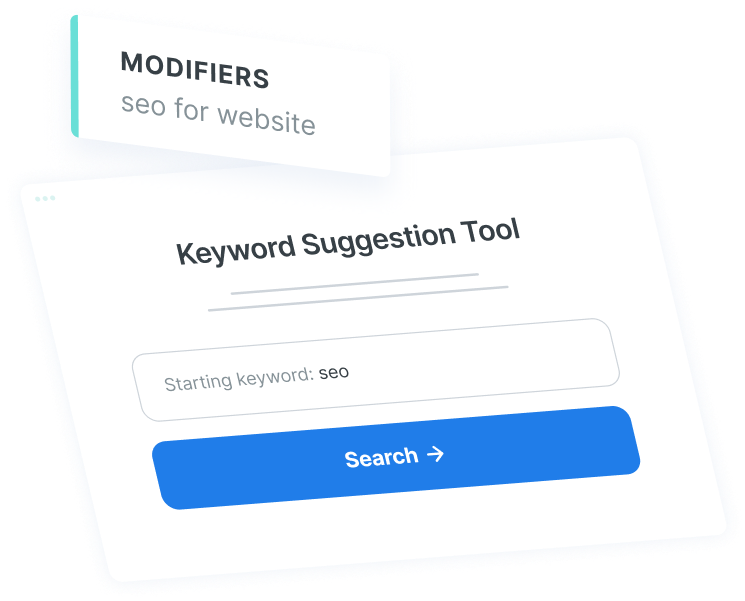

Step 2: Optimize your website’s meta tags to include target keywords
Once you’ve selected your target keywords, strategically incorporate them into your website’s meta tags (title tag and meta description). Here’s how you can optimize your meta tags:
Prioritize keyword placement in title tags
The title tag is particularly crucial since it is one of the first things consumers and search engines see when your website appears in search results. Be sure to position your target keyword at the beginning of the title tag to maximize its effectiveness. This method helps search engines assess your website’s relevance to the user’s search query.
For instance, a well-optimized title tag for the target keyword “bakery in New York City” could be “Best Bakery in NYC: Healthy and Freshly Baked Treats.”

By opening the tag with the keywords “best bakery” and “New York City,” you signal to search engines that your site is relevant to searches for bakeries in that region. This tactic helps increase the visibility of your website and generate more focused organic visitors.
Moreover, ensure the title tag appropriately summarizes your webpage content while remaining concise and clear.
Craft compelling and relevant meta descriptions
The meta description and the title tag are crucial for getting visitors to click on your website in search results. It must reflect the page’s content and incorporate the target keywords. A well-written meta description can dramatically boost your website’s organic traffic and click-through rate.
Ensure your meta description appropriately summarizes the information on the page and contains pertinent keywords to maximize its effectiveness. To further persuade readers to click on your website, consider adding a call-to-action or highlighting any unique selling points (USPs).
For example, if you sell organic skin care products, your meta description could be: “Transform your skin with our organic skin care products and nourishing formulas to experience silky skin today. Shop Now!”
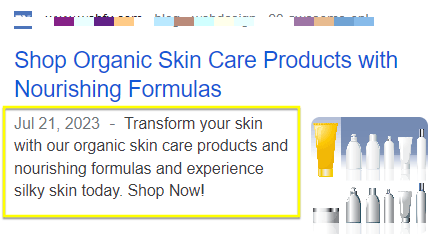
This meta description effectively represents the page’s content, incorporates relevant keywords such as “organic skincare products,” and entices consumers to “Shop now.”
You can improve your organic traffic and increase the number of visitors to your website by devoting time and effort to writing engaging meta descriptions.
Step 3: Create unique and valuable content
Follow these steps to produce original, valuable content for programmatic SEO that is simple for crawlers and indexers to access:
1. Plan the content structure
With your keywords selected, start developing the content structure by dividing it into pertinent segments or titles that correspond with the target keyword. In doing so, you’ll aid search engines in recognizing the relevance and order of your website content.
Also, it’ll facilitate the users’ navigation and ability to locate the information. Use bullet points and subheadings to make the text easier to skim. Once you have a clear framework, you can fill in each section with exciting and engaging content — which brings us to the next step!
2. Create engaging and informative content
Write compelling and informative content that adds value to the target audience while organically integrating the identified keywords.
Here are a few fundamental principles you can follow to create engaging content:
- Ensure the information is accurate and current by conducting extensive research
- Incorporate multimedia elements— text, images, and videos — to make the content visually appealing and engaging
- Consider incorporating personal anecdotes or storytelling techniques to make the content more relatable and memorable
- Use headings, subheadings, and bullet points to help readers digest and find the necessary information
- Use interactive elements like quizzes, polls, or surveys to encourage active participation and further engage readers
Additionally, it’s critical to cite credible sources and include references for any data or facts that the piece presents. This approach increases trust and allows readers to authenticate the material independently.
Optimize the on-page elements of the content for programmatic SEO
Use the identified keywords to enhance the on-page content elements — headers, meta tags, and image alt text. This approach will increase your chances of appearing higher in search results by assisting search engines in determining the relevance of your content to particular search queries.
Here are some on-page elements to optimize:
- Meta tags (title tag and meta description) should incorporate the identified keywords naturally and persuasively.
- Headers (H1 and H2 tags) must include keywords to create a clear structure for users and search engines.
- Optimize image alt text with relevant keywords to improve the accessibility and visibility of your content and increase its chances of appearing in image search results.
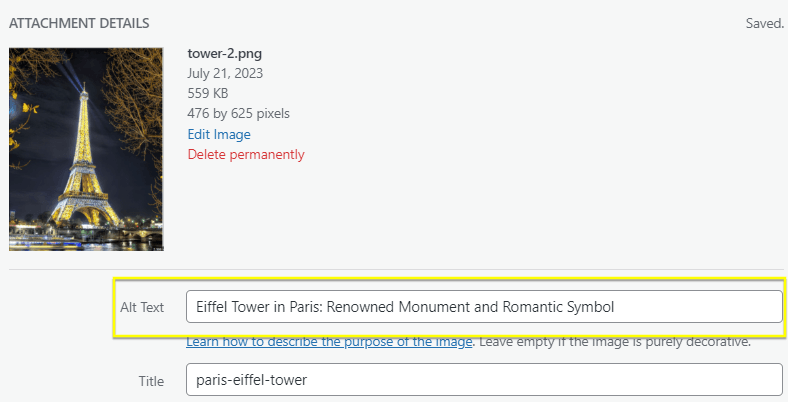
This tactic assists search engines with understanding the image’s content and increases its chances of appearing in relevant image search results.
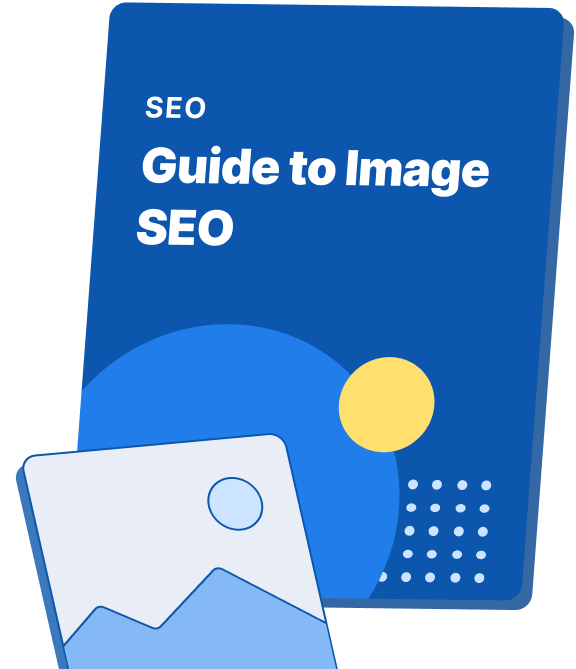

Images make up 62.6% of all searches
Learn how to optimize and leverage your website images for organic search!
Get My Free GuideIncorporate internal and external links within the content
Add internal and external links to the material to offer more resources and credibility. Internal links direct viewers to relevant articles or pages on your website, encouraging them to read more of your content. They enhance user experience and search engine crawling and indexing.
External links, on the other hand, can give your material more authority and credibility while giving readers access to additional resources that support your assertions. By thoughtfully including these references, you can improve your content’s quality and relevancy.
Regularly update and refresh the content
Maintain the content’s relevancy and keep it up-to-date with the most recent facts to preserve its search engine rating. You can do this by frequently evaluating and editing your material to ensure it is correct, current, and indicative of any new developments or trends in your business.
Also, incorporating fresh data or insights might draw back visitors and motivate them to spread the word about your content. You can show your audience that you are committed to giving them valuable and current information by regularly updating and revising your material, which will eventually help your search engine rankings.
Step 4: Optimize your website’s URL structure
Here are steps to optimize your website’s URL structure so it’s easy to crawl and index:
- Sort your target keywords by significance and relevance to your website content. Include these target keywords in the domain name, subdirectories, and individual webpage URLs.
- Create a hierarchical structure for your website’s URLs that matches your content organization framework. An example URL structure might be www.example.com/gardening/flowers and www.example.com/gardening/vegetables for a gardening-related website having “flowers” and “vegetables” categories.
- Use descriptive words instead of generic numbers or symbols in your URLs. This approach makes the website easier to interpret for both people and search engines. Instead of using URL slugs like www.example.com/page1, for instance, try www.example.com/gardening/tips-for-vegetable-gardening.
- Use hyphens to separate words in your URLs rather than underscores or spaces. Separating words with hyphens makes interpreting your site content simpler for search engines. Google also favors hyphens over underscores or spaces because they are more aesthetically pleasing and simpler for people to read.
- Make sure your URLs are static and stay the same since this might influence how well search engines index them. Due to the search engines’ potential inability to keep up with the modifications, frequent URL changes might cause indexing problems.
- Implement 301 redirects from old URLs to new ones if you make any modifications to prevent broken links and maintain SEO value. It’s essential to utilize 301 redirects to redirect visitors seamlessly and search engines from the old URLs to the new ones. This method prevents broken links and maintains the SEO value of your website by moving the ranking signals to the new URLs.
Step 5: Implement schema markup on your website
Here’s how to implement schema markup on your website for programmatic SEO:
1. Identify the relevant schema markup for your website
Choose the appropriate schema markup for your website. This markup can apply to products, publications, events, and ratings. For instance, if you run an e-commerce website, you can use schema markup for products to include specific details — price, availability, and user reviews.
This technique can increase click-through rates while enhancing your website’s visibility in SERPs.
2. Incorporate schema into your website’s HTML code
You can manually do this by directly inserting the required schema markup tags into the HTML code of each pertinent page. Plugins and extensions also streamline adding schema markup to your website if you use a content management system (CMS), like WordPress or Shopify.
3. Test the schema markup to ensure it is implemented correctly
You can use online tools like Google’s Markup Testing Tool or Schema.org’s Markup Validator to verify that your website applies the schema markup correctly.
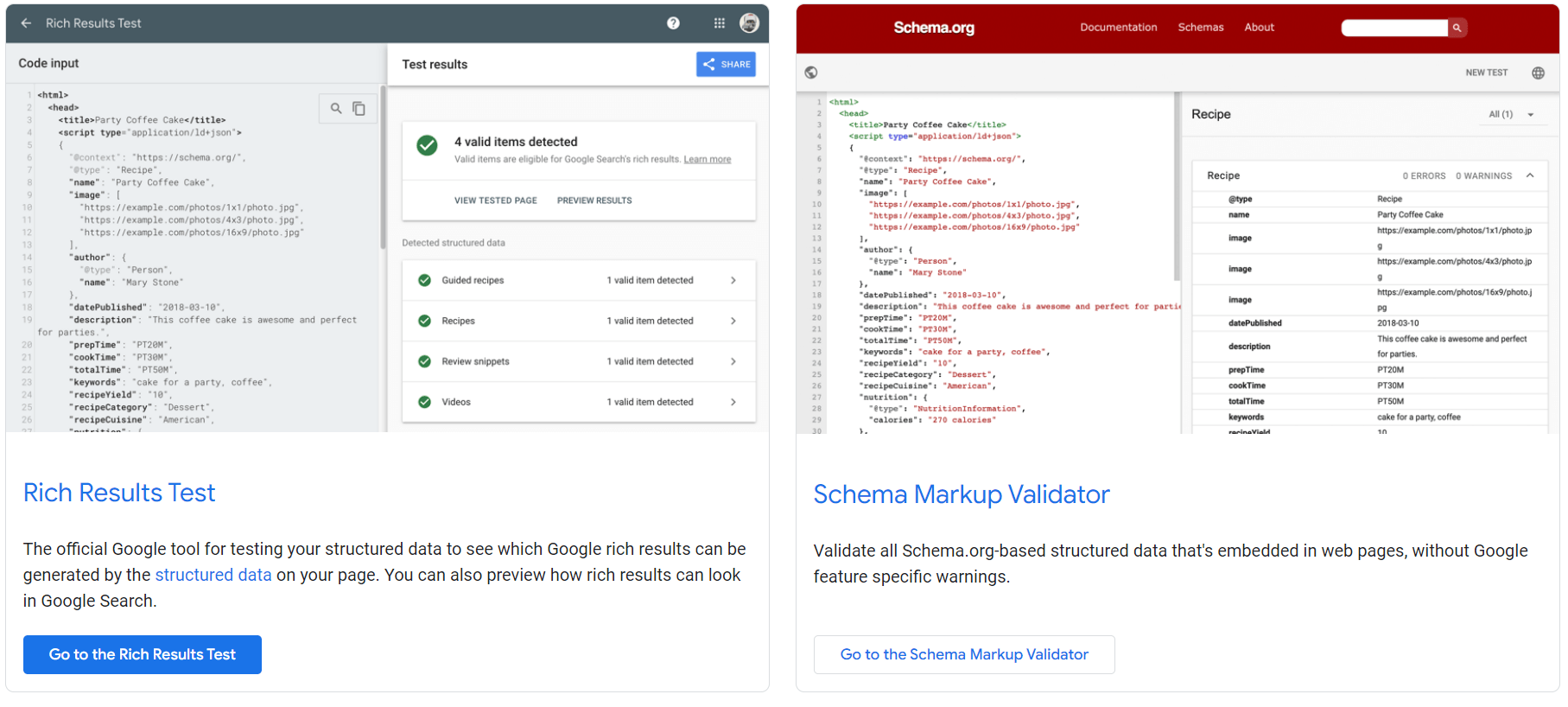
These tools will examine the HTML code of your website and report any flaws or problems with the schema markup.
4. Monitor and update your schema markup as needed
Ensure that the schema markup appropriately matches the current state of your content, as the information on your website may change over time. Also, search engines may modify their guidelines or ranking factors, so it’s essential to keep up with any modifications that might impact the efficiency of your schema markup.
Step 6: Regularly monitor and analyze your website’s performance
Use analytics tools to regularly track and evaluate your website’s performance to identify areas for improvement. You can learn much about how visitors use your website by monitoring metrics like:
- Page views
- Bounce rate
- Engagement rate
- Conversion rate
You can use this data to pinpoint any bottlenecks or spots where visitors are losing interest, enabling you to implement modifications that will specifically improve the user experience.
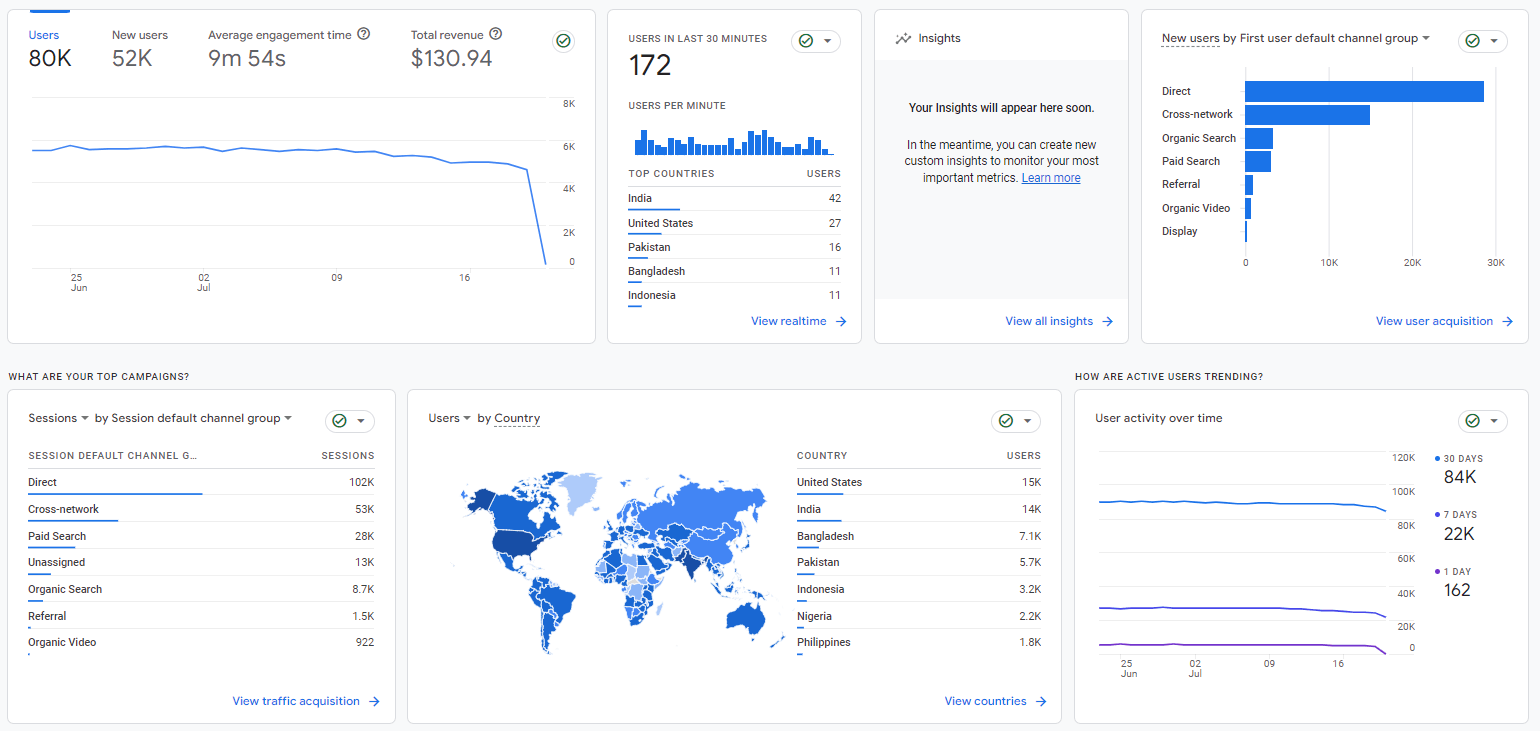
You can also efficiently optimize your efforts and allocate resources by understanding which marketing techniques and campaigns generate the most traffic and conversions. The best way to do this is by analyzing the performance of your website.
Furthermore, you can utilize A/B testing to contrast several website iterations or specific components, such as landing pages or call-to-action buttons. To improve your website for higher conversion rates, you can use this information to determine which version works better and to make data-driven decisions.
We’re masters of our craft.


300+

9,000+

4,000+

200+

100+
Drive revenue with programmatic SEO services from WebFX
Our team of more than 500 experts specializes in implementing programmatic SEO strategies to boost online visibility and drive organic website traffic. We evaluate your website’s effectiveness, pinpoint areas for improvement, and create specialized techniques using our data-driven approach.
Our programmatic SEO services can deliver the desired outcomes, whether you’re a small business trying to boost visibility or a large corporation aiming to dominate the search engine rankings.
Contact us online or call 888-601-5359 to speak with one of our SEO experts and learn how our SEO services can benefit your business!
-
 Sina is a marketing expert who specializes in SEO, AI, and digital marketing content. With over five years of experience, she’s written hundreds of pieces, spanning a variety of topics and industry niches. She loves combining her strong eye for detail and passion for storytelling in her work. You’ll find her fruit picking or horse riding at the local farm when she’s not writing.
Sina is a marketing expert who specializes in SEO, AI, and digital marketing content. With over five years of experience, she’s written hundreds of pieces, spanning a variety of topics and industry niches. She loves combining her strong eye for detail and passion for storytelling in her work. You’ll find her fruit picking or horse riding at the local farm when she’s not writing. -

WebFX is a full-service marketing agency with 1,100+ client reviews and a 4.9-star rating on Clutch! Find out how our expert team and revenue-accelerating tech can drive results for you! Learn more
Try our free Marketing Calculator
Craft a tailored online marketing strategy! Utilize our free Internet marketing calculator for a custom plan based on your location, reach, timeframe, and budget.
Plan Your Marketing Budget
Table of Contents
- What is programmatic SEO?
- Why does programmatic SEO matter?
- How to do programmatic SEO
- Step 1: Conduct keyword research for programmatic SEO
- Step 2: Optimize your website’s meta tags to include target keywords
- Step 3: Create unique and valuable content
- Step 4: Optimize your website’s URL structure
- Step 5: Implement schema markup on your website
- Step 6: Regularly monitor and analyze your website’s performance
- Drive revenue with programmatic SEO services from WebFX

SEO Success with KOA

Proven Marketing Strategies
Try our free Marketing Calculator
Craft a tailored online marketing strategy! Utilize our free Internet marketing calculator for a custom plan based on your location, reach, timeframe, and budget.
Plan Your Marketing Budget
What to read next






